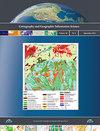Estimating neighborhood-level population characteristics from parcel data
IF 2.4
3区 地球科学
Q1 GEOGRAPHY
Cartography and Geographic Information Science
Pub Date : 2023-11-07
DOI:10.1080/15230406.2023.2271379
引用次数: 0
Abstract
ABSTRACTThis paper investigates how ancillary geographic data – in particular, information on land or assessor parcels – might be used to improve estimates for small area populations and population characteristics. It seeks to determine whether parcel land use codes can be used to reliably replicate population and housing distributions within small (subcounty) areas and whether other parcel attributes – in addition to land use – exhibit any explanatory power in replicating population and housing characteristics within these same places. The basis for this paper was Professor Barbara Buttenfield’s service on the Census Scientific Advisory Committee, in which her working group explored the utility of administrative source data as an alternative or complement to federal survey data. This analysis highlights some of the benefits and complications of the incorporation of parcel data into geodemographic estimation, and the findings demonstrate that such a use is problematic but encouraging.KEYWORDS: Parcelneighborhoodpopulationestimationcadastralsmall-area Disclosure statementNo potential conflict of interest was reported by the author(s).Data availability statementThe data that support the findings of this study are available in the Github UofLKSDC/CAGIS2022 repository available at https://zenodo.org/badge/latestdoi/515252659. Elements of these data were derived from the following resources available in the public domain: National Historical Geographic Information System [https://www.nhgis.org].从包裹数据估计社区人口特征
摘要本文研究了辅助地理数据——特别是关于土地或评估地块的信息——如何用于改进对小区域人口和人口特征的估计。它试图确定地块土地使用代码是否可以用来可靠地复制小(县以下)区域内的人口和住房分布,以及除了土地使用之外的其他地块属性是否在复制这些地方的人口和住房特征方面表现出任何解释力。本文的基础是芭芭拉·布登菲尔德教授在人口普查科学咨询委员会的服务,她的工作组探索了行政源数据作为联邦调查数据的替代或补充的效用。这一分析强调了将包裹数据纳入地理人口估算的一些好处和复杂性,研究结果表明,这种使用是有问题的,但令人鼓舞。关键词:包裹、邻里、人口估算、地籍、小面积披露声明作者未报告潜在的利益冲突。数据可用性声明支持本研究结果的数据可在https://zenodo.org/badge/latestdoi/515252659的Github uflksdc /CAGIS2022存储库中获得。这些数据的元素来自下列公共领域的资源:国家历史地理信息系统[https://www.nhgis.org]。
本文章由计算机程序翻译,如有差异,请以英文原文为准。
求助全文
约1分钟内获得全文
求助全文
来源期刊
CiteScore
5.20
自引率
20.00%
发文量
23
期刊介绍:
Cartography and Geographic Information Science (CaGIS) is the official publication of the Cartography and Geographic Information Society (CaGIS), a member organization of the American Congress on Surveying and Mapping (ACSM). The Cartography and Geographic Information Society supports research, education, and practices that improve the understanding, creation, analysis, and use of maps and geographic information. The society serves as a forum for the exchange of original concepts, techniques, approaches, and experiences by those who design, implement, and use geospatial technologies through the publication of authoritative articles and international papers.

 求助内容:
求助内容: 应助结果提醒方式:
应助结果提醒方式:


